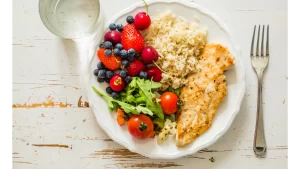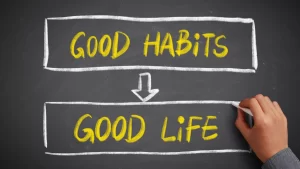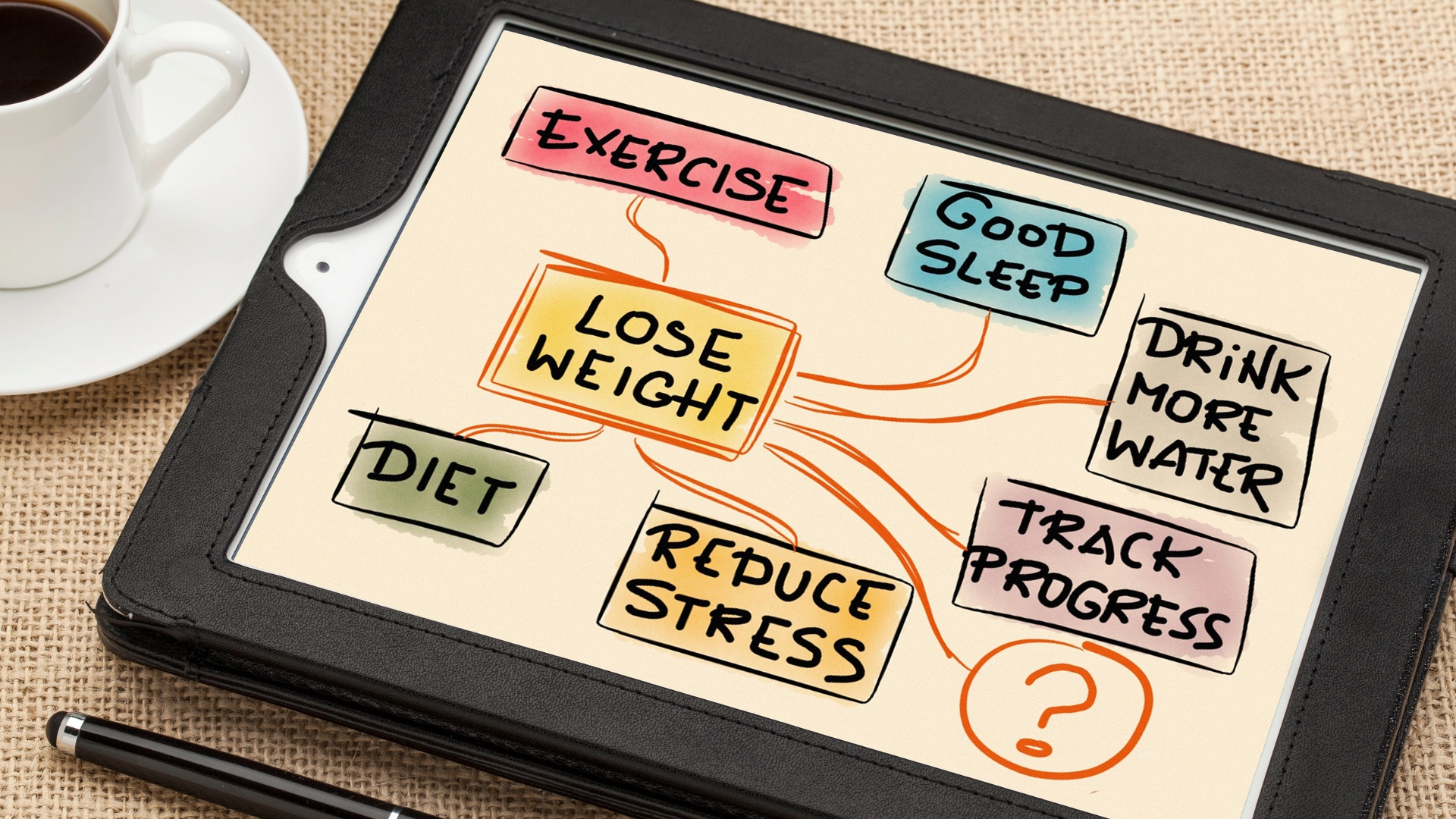How to Lose Weight: The Ultimate Guide to Weight Loss
It can seem impossible to discover a sustainable way to reach and maintain a healthy weight in a society full of fad diets and quick fixes for weight loss. You’re not alone if you’ve fallen victim to the painful cycle of yo-yo dieting, when you have periods of initial success interspersed with frustrating setbacks. Throughout the world, millions of people battle with their weight, frequently feeling overwhelmed by contradicting data and irrational expectations.
The good news is that, with the correct information and strategy, sustainable weight loss is not only feasible but also attainable. This extensive manual is intended to help you sort through the clutter and get evidence-based tactics that will work for you in the long run.
This article will give you the knowledge and resources you need to accomplish your objectives and keep up your weight reduction, regardless of where you are in the process of losing weight.
Understanding the Basics of Weight Loss
Understanding the underlying principles of weight loss is essential before delving into specific treatments. You can set reasonable expectations for your journey and make well-informed decisions with the aid of this foundation.
The Energy Balance Equation

Fundamentally, losing weight involves creating an energy deficit, or burning more calories than you take in. Even though this idea seems simple, there are a number of variables that affect both sides of the equation:
Calorie intake:
- The types and amounts of food you eat
- Portion sizes and meal frequency
- Hidden calories in beverages and condiments
- Emotional eating and mindless snacking
Calorie expenditure:
- Basal metabolic rate (BMR): The calories your body burns at rest
- Physical activity: Both structured exercise and daily movement
- Thermic effect of food (TEF): Calories burned during digestion
- Non-exercise activity thermogenesis (NEAT): Calories burned through fidgeting, standing, and other non-exercise movements
Knowing these elements enables you to identify places where you can assist your weight reduction objectives with significant improvements.
The Role of Metabolism

Your metabolism plays a significant role in weight loss, influencing how efficiently your body burns calories. Several factors affect metabolic rate:
- Age: Metabolism typically slows as we get older
- Gender: Men generally have a higher metabolic rate than women due to greater muscle mass
- Body composition: Muscle tissue burns more calories than fat tissue
- Hormones: Thyroid hormones, cortisol, and insulin all impact metabolism
- Genetics: Some people naturally have a faster or slower metabolism
- Sleep: Poor sleep can negatively affect metabolic rate
- Diet history: Frequent restrictive dieting can slow metabolism
Even though you have no control over all of these variables, being aware of their impact can enable you to adjust your strategy and establish reasonable goals for your weight loss efforts.
Nutrition Strategies for Effective Weight Loss
A healthy, well-balanced diet is the foundation of any weight loss program that works. Your body may be nourished and your weight loss objectives supported by adopting a sustainable approach that emphasizes high-quality foods and attentive eating habits.
1. Focus on Whole Foods

Making nutrient-dense, minimally processed foods a priority is crucial for improving general health and shedding pounds. These foods give you vital nutrients and satisfy your hunger while lowering your calorie intake. Add a ton of:
- Fruits and vegetables: Aim for a variety of colors to ensure a wide range of vitamins, minerals, and antioxidants. These foods are high in fiber and water content, promoting fullness and hydration.
- Lean proteins: Options like chicken, fish, lean beef, eggs, legumes, and tofu support muscle maintenance and promote satiety. Aim to include a source of protein with each meal.
- Whole grains: Choose complex carbohydrates like brown rice, quinoa, oats, and whole wheat bread. These provide sustained energy and important nutrients like B vitamins and fiber.
- Healthy fats: Incorporate sources like avocados, nuts, seeds, olive oil, and fatty fish. While calorie-dense, these foods are crucial for hormone balance and nutrient absorption.
You can create a diet that supports your weight loss goals and unintentionally eliminate less nutrient-dense items by structuring your meals around these whole food groups.
2. Practice Portion Control

When ingested in excess, even healthful meals can cause weight gain. To control calorie consumption without experiencing a sense of deprivation, portion control is essential. Try out these methods:
- Use smaller plates and bowls to create the illusion of larger portions
- Measure servings until you can accurately eyeball portion sizes
- Fill half your plate with non-starchy vegetables at each meal
- Use your hand as a guide: a palm-sized portion of protein, a cupped handful of grains or starchy vegetables, and a thumb-sized portion of fats
- Practice mindful eating by eating slowly and without distractions
- Listen to your body’s hunger and fullness cues
Remember that portion control does not equate to little, bland meals. It’s about striking the correct balance to assist your weight loss objectives and fuel your body.
3. Balance Macronutrients

Reaching the ideal ratio of fats, carbs, and proteins will help you lose weight more effectively and maintain good health in general. Although each person’s needs are unique, as a general rule of thumb:
- Protein: 20-30% of total calories
- Carbohydrates: 45-65% of total calories
- Healthy fats: 20-35% of total calories
Sufficient protein intake is especially crucial when losing weight since it keeps muscle mass intact and increases feelings of fullness. Try to have a lean protein source at every meal and snack. Despite their somewhat unfavorable reputation, carbohydrates are a vital source of nutrients and energy. Prioritize complex carbs derived from fruits, vegetables, and whole grains above processed foods and refined sugars. For the body to produce hormones, absorb nutrients, and feel fulfilled, healthy fats are necessary. Incorporate sources such as nuts, seeds, avocados, and olive oil, but in moderation.
4. Stay Hydrated

Hydration in the right amounts promotes metabolism and can lessen appetite. Thirst is sometimes confused with hunger, which results in needless snacking. Attempt to:
- 8-10 glasses of water per day, more if you’re very active or in hot weather
- Unsweetened beverages like herbal tea or infused water for variety
- Eating water-rich foods like cucumbers, watermelon, and zucchini
To remind yourself to stay hydrated during the day, think about carrying a reusable water bottle with you.
5. Mindful Eating Practices

Developing a healthier relationship with food is crucial for long-term weight management. Mindful eating involves:
- Eating slowly and without distractions (e.g., no TV or phone)
- Paying attention to hunger and fullness cues
- Appreciating the flavors, textures, and aromas of your food
- Addressing emotional eating triggers through non-food coping mechanisms
- Planning meals and snacks to avoid impulsive eating
You may make better food choices, cut down on overeating, and cultivate a healthier connection with food by engaging in mindful eating.
Types of Exercise for Weight Loss
Although nutrition is the main factor in weight loss, physical activity is also important for long-term weight maintenance, general health, and many other advantages. Frequent exercise increases energy, elevates mood, burns calories, and improves quality of life overall.
A well-rounded exercise program should incorporate a mix of different types of physical activity:
1. Cardiovascular exercise:

Cardio improves heart health, burns calories, and enhances overall fitness. Examples include:
- Walking
- Jogging or running
- Cycling
- Swimming
- Dancing
- Rowing
- High-intensity interval training (HIIT)
Aim for at least 150 minutes of moderate-intensity or 75 minutes of vigorous-intensity cardio per week.
2. Strength training:

Building muscle is crucial for boosting metabolism and maintaining weight loss. Include exercises like:
- Weight lifting (free weights or machines)
- Bodyweight exercises (push-ups, squats, lunges)
- Resistance band workouts
- Pilates
Try to incorporate strength training 2-3 times per week, targeting all major muscle groups.
3. Flexibility and balance:

While not directly related to weight loss, these activities support overall fitness and injury prevention:
- Yoga
- Stretching routines
- Tai chi
- Balance exercises
Include these activities 2-3 times per week or as part of your cool-down after other workouts.
Creating an Effective Exercise Routine

To maximize the benefits of exercise for weight loss:
- Start slowly and gradually increase intensity and duration to avoid injury and burnout
- Aim for at least 150 minutes of moderate-intensity aerobic activity per week, or 75 minutes of vigorous-intensity activity
- Include strength training 2-3 times per week to build muscle and boost metabolism
- Find activities you enjoy to increase adherence – exercise doesn’t have to be a chore
- Mix up your routine to prevent boredom and challenge your body in new ways
- Consider working with a certified personal trainer to develop a safe and effective program tailored to your needs and goals
Non-Exercise Activity Thermogenesis (NEAT)
NEAT refers to the calories burned through daily activities that aren’t structured exercise. Increasing your NEAT can significantly impact your overall calorie expenditure. Try:
- Taking the stairs instead of the elevator
- Walking or biking for short trips instead of driving
- Standing or walking while on phone calls
- Using a standing desk or treadmill desk for part of your workday
- Doing household chores like gardening, cleaning, or home repairs
- Playing active games with your children or pets
Remember, every bit of movement counts. Look for opportunities to increase your activity throughout the day, even in small ways.
Setting Realistic Goals

Successful weight loss isn’t just about diet and exercise—it’s also about mindset and behavior change. Addressing the psychological aspects of weight loss can significantly improve your chances of long-term success.
Establishing clear, achievable goals is crucial for maintaining motivation and tracking progress. Use the SMART criteria to set effective goals:
- Specific: Clearly define what you want to achieve
- Measurable: Choose goals that can be quantified
- Achievable: Set challenging but realistic targets
- Relevant: Ensure your goals align with your overall health and lifestyle objectives
- Time-bound: Set a timeframe for achieving your goals
Example: “I will lose 1-2 pounds per week by following my meal plan and exercising 4 times a week for the next 3 months.”In addition to weight-related goals, consider setting non-scale goals such as improving energy levels, fitting into a favorite piece of clothing, or completing a fitness challenge.
Developing Healthy Habits

Sustainable weight loss is about creating lasting lifestyle changes. Focus on developing healthy habits that support your goals:
- Meal planning and preparation: Set aside time each week to plan and prep healthy meals
- Consistent sleep schedule: Aim for 7-9 hours of quality sleep each night
- Stress management techniques: Practice meditation, deep breathing, or other relaxation methods
- Regular exercise routine: Schedule workouts like any other important appointment
- Mindful eating practices: Pay attention to hunger cues and eat without distractions
Remember, it takes time to form new habits. Be patient with yourself and celebrate small victories along the way.
Overcoming Common Obstacles

Anticipate and prepare strategies for dealing with common weight loss challenges:
- Emotional eating: Develop non-food coping mechanisms for stress, boredom, or other emotions
- Social pressure and food-centric events: Plan ahead, bring a healthy dish to share, or eat a small meal before attending
- Plateaus and setbacks: Understand that progress isn’t always linear and have a plan to push through plateaus
- Time constraints: Prioritize self-care and find ways to incorporate healthy habits into your busy schedule
- Negative self-talk: Practice positive affirmations and reframe negative thoughts
The Importance of Support

Building a strong support system can significantly impact your weight loss success:
- Join a weight loss support group (in-person or online)
- Work with a registered dietitian or personal trainer for personalized guidance
- Share your goals with friends and family and ask for their support
- Find an accountability partner or workout buddy
- Use social media or apps to connect with others on similar journeys
Remember, asking for help is a sign of strength, not weakness. Surround yourself with people who encourage and motivate you to reach your goals.
Tracking Progress and Adjusting Your Approach

Monitoring your progress is essential for long-term success in weight loss. Regular tracking allows you to celebrate victories, identify areas for improvement, and make necessary adjustments to your plan.
Effective Tracking Methods
Use a combination of methods to get a comprehensive picture of your progress:
- Regular weigh-ins: Aim for weekly or bi-weekly weigh-ins at the same time of day, preferably in the morning before eating or drinking
- Body measurements: Use a tape measure to track changes in your waist, hips, thighs, and other areas
- Progress photos: Take photos from the front, side, and back every 4-6 weeks
- Fitness assessments: Regularly test your strength, endurance, and flexibility
- Food and activity logs: Keep a detailed record of your meals, snacks, and exercise
Consider using a smartphone app or fitness tracker to streamline the tracking process and provide insights into your habits.
Advanced Strategies for Continued Progress
Once you’ve mastered the basics of nutrition and exercise for weight loss, you might consider incorporating some advanced techniques to further optimize your results.
Intermittent Fasting

Intermittent fasting involves cycling between periods of eating and fasting. Various approaches include:
- 16/8 method: 16 hours fasting, 8-hour eating window
- 5:2 diet: 5 normal eating days, 2 very low-calorie days (500-600 calories)
- Eat-Stop-Eat: 24-hour fasts once or twice a week
Potential benefits include improved insulin sensitivity, increased growth hormone production, and enhanced cellular repair. However, it’s not suitable for everyone, so consult with a healthcare professional before trying intermittent fasting.
Carb Cycling

Carb cycling involves alternating between higher and lower carbohydrate days. This approach can help:
- Manage insulin levels
- Support exercise performance
- Break through plateaus
A basic carb cycling plan might involve 2-3 low-carb days followed by 1-2 higher-carb days, aligned with your exercise schedule. This strategy requires careful planning and may not be necessary for everyone.
High-Intensity Interval Training (HIIT)

HIIT involves short bursts of intense exercise alternated with periods of rest or low-intensity activity. Benefits include:
- Increased calorie burn during and after exercise
- Improved cardiovascular fitness
- Time-efficient workouts
A simple HIIT workout might involve 30 seconds of all-out effort followed by 30 seconds of rest, repeated for 15-20 minutes. Always warm up properly and start with shorter intervals if you’re new to HIIT.
Maintaining Your Weight Loss Long-Term
Achieving your weight loss goal is a significant accomplishment, but maintaining your results requires ongoing effort and commitment. Here’s how to transition from weight loss to weight maintenance:
Transition to Maintenance Calories

As you approach your goal weight, gradually increase your calorie intake to support your new weight:
Add 100- 200 calories per week
- Monitor your weight and adjust as needed
- Use an online calculator or consult with a dietitian to determine your maintenance calorie needs
Remember that your maintenance calorie needs may be higher than your weight loss calorie intake but lower than your pre-weight loss consumption.
Continue Regular Exercise

Maintaining or even increasing your physical activity is crucial for long-term weight maintenance:
- Aim for at least 200-300 minutes of moderate-intensity exercise per week
- Continue strength training to preserve muscle mass and maintain a higher metabolic rate
- Explore new activities or set new fitness goals to stay motivated
- Incorporate more NEAT into your daily routine
Regular exercise not only helps with weight maintenance but also improves overall health, mood, and quality of life.
Conclusion: Path to Sustainable Weight Loss
Achieving and maintaining a healthy weight is a journey, not a destination. By focusing on balanced nutrition, regular physical activity, and positive behavioral changes, you can create a sustainable approach to weight management that supports your overall health and well-being. Remember these key points as you move forward:
- Sustainable weight loss is about creating healthy habits, not following restrictive diets.
- A combination of nutritious eating, regular exercise, and mindset shifts is crucial for long-term success.
- Progress isn’t always linear – expect ups and downs and focus on overall trends.
- Self-monitoring and adjusting your approach as needed are essential for ongoing success.
- Celebrate all victories, both on and off the scale.
- Seek support when needed, whether from friends, family, or professionals.
There’s no one-size-fits-all solution to weight loss. Be patient with yourself, stay consistent, and don’t hesitate to seek professional guidance when needed. With dedication and the right strategies, you can achieve your weight loss goals and enjoy the many benefits of a healthier lifestyle.
Are you ready to start your weight loss journey? Begin by setting a realistic goal and implementing one or two strategies from this guide. Remember, small, consistent changes can lead to significant results over time. Focus on progress, not perfection, and celebrate each step forward.Your journey to a healthier you starts now. Embrace the process, trust in your ability to change, and look forward to the positive transformations ahead. Here’s to your health, happiness, and success!
FAQ’s
1. What is sustainable weight loss?
2. Why is rapid weight loss not recommended?
3. How important is exercise for weight loss?
4. What are some common weight loss mistakes to avoid?
5. How can I overcome a weight loss plateau?
6. Is it necessary to cut out entire food groups to lose weight?

